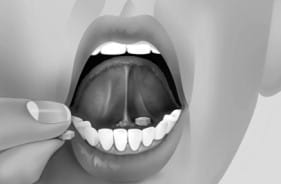Methadone and buprenorphine/naloxone are two of the primary medication options for treatment of people affected by opioid addiction. Both medications belong to a treatment approach called opioid substitution therapy. In a study published in January 2014 in the journal Addiction, researchers from six U.S. institutions compared the effectiveness of methadone to the effectiveness of buprenorphine/naloxone. These researchers found that each medication option has its unique benefit as an opioid addiction treatment. They also found that relatively high doses of each medication produce better results than relatively low doses.
Methadone Basics
Methadone is an opioid medication produced in pharmaceutical laboratories from the same chemical structure that forms the basis for the naturally occurring opioid morphine. When an individual addicted to a powerful opioid drug (the classic example is heroin) takes this medication, he or she can reduce the level of danger associated with taking opioid substances while still receiving enough of an opioid boost to avoid withdrawal symptoms. Methadone produces this benefit, in part, because its effects do not kick in as rapidly as the effects of heroin or other powerful opioids. In addition, methadone has a relatively low ability to trigger euphoria, the intensely pleasurable state that opioid abusers and addicts typically seek to recreate again and again over time. Some people receive the medication on a short-term basis as part of an effort to entirely discontinue opioid use. However, many others receive methadone for extended periods of time as part of an ongoing effort to manage and contain the harms of full-blown opioid addiction.
Buprenorphine/Naloxone Basics
Buprenorphine is an opioid medication that produces even lower levels of euphoria than methadone. As is true with methadone, doctors can use this medication as a substitute for more powerful opioid substances in order to control the risks for withdrawal symptoms during the addiction treatment process. Naloxone is an anti-opioid medication that stops opioids from triggering their mind- and body-altering effects. Pharmaceutical manufacturers combine these two medications in order to reduce the chances that any given person using buprenorphine will abuse his or her prescription and start taking the opioid for recreational purposes. In this context, naloxone plays its part by effectively limiting the amount of time in which buprenorphine remains active and produces an opioid effect. In the U.S., most patients receive a buprenorphine/naloxone combination known as suboxone, which dissolves gradually when placed under the tongue.
Relative Benefits
In the study published in Addiction, the U.S. research team used an examination of 1,267 adults receiving treatment for opioid addiction to compare the relative benefits of methadone use and buprenorphine/naloxone use. Each of these individuals took part in one of nine specific opioid treatment programs at some point between the beginning of 2006 and the end of 2009. Half of the participants received a 24-week course of methadone in their programs, while the other half received a 24-week course of buprenorphine/naloxone. The researchers based their comparison between the two medications on outcomes that included the number of days spent in a treatment program, successful completion of a treatment program, the ability to avoid using illicit opioids during treatment and the medication dosage received during treatment. After completing their comparison, the researchers found that people who receive adequate amounts of methadone as part of their opioid addiction treatment successfully complete that treatment far more often (74 percent of the time) than people who receive adequate amounts of buprenorphine/naloxone (46 percent of the time). However, they also found that, among all of the people who finish their treatment, individuals who receive buprenorphine/naloxone take illicit opioids during that treatment significantly less often than individuals who receive methadone. In addition, the researchers found that — regardless of whether methadone or buprenorphine/naloxone is in use — treatment completion rates go up when doctors increase medication dosages from an adequate level to an optimum level. The program completion boost provided by an optimum dose of buprenorphine/naloxone is somewhat higher than the program completion boost provided by an optimum dose of methadone.
Significance and Considerations
The findings reported by the authors of the Addiction study indicate that both methadone and buprenorphine/naloxone provide their own specific benefits as treatment options for recovering opioid addicts. Doctors who prescribe these medications may find the authors’ conclusions useful when making their own decisions about whether to use methadone or buprenorphine/naloxone as their baseline form of opioid substitution therapy.

